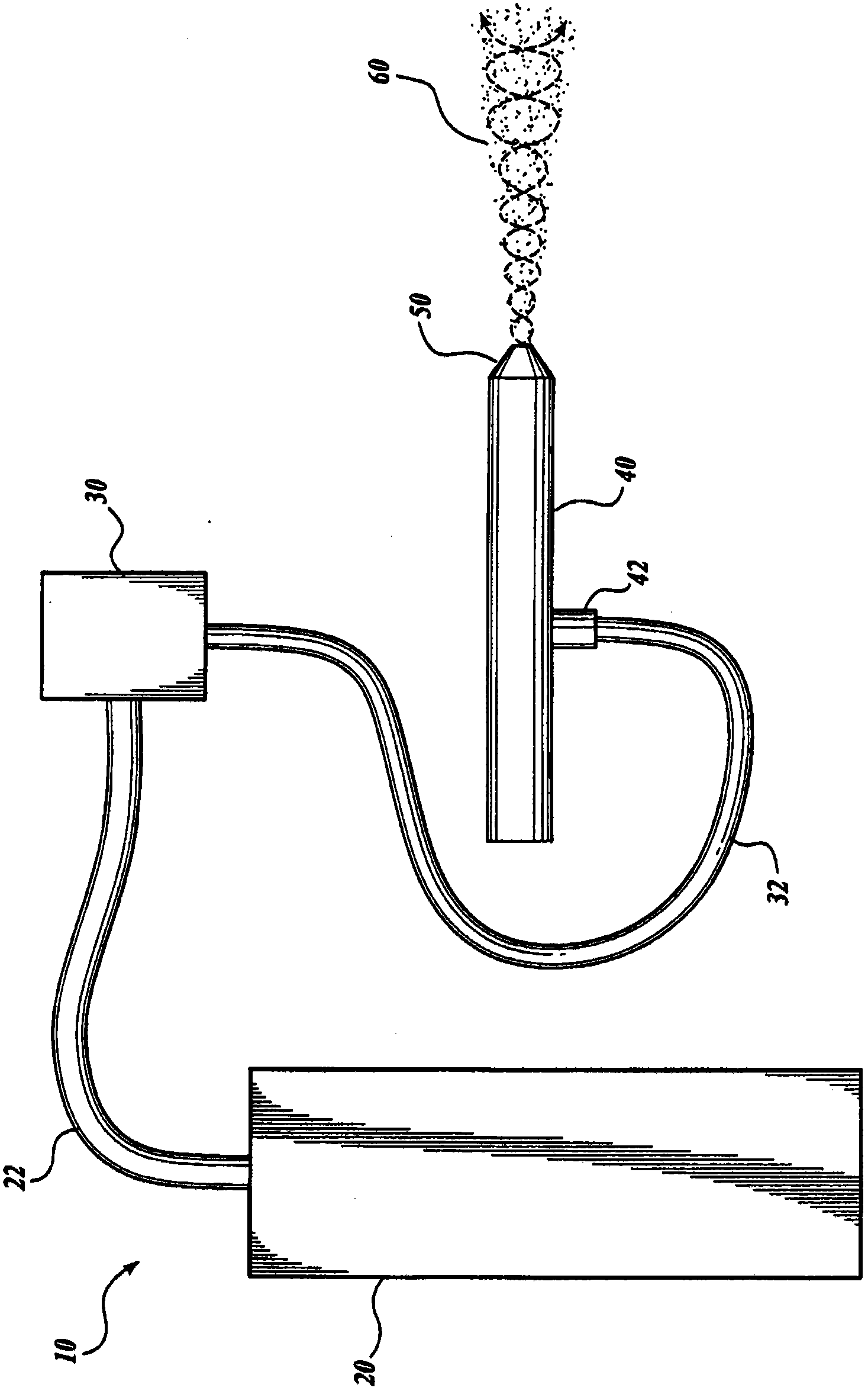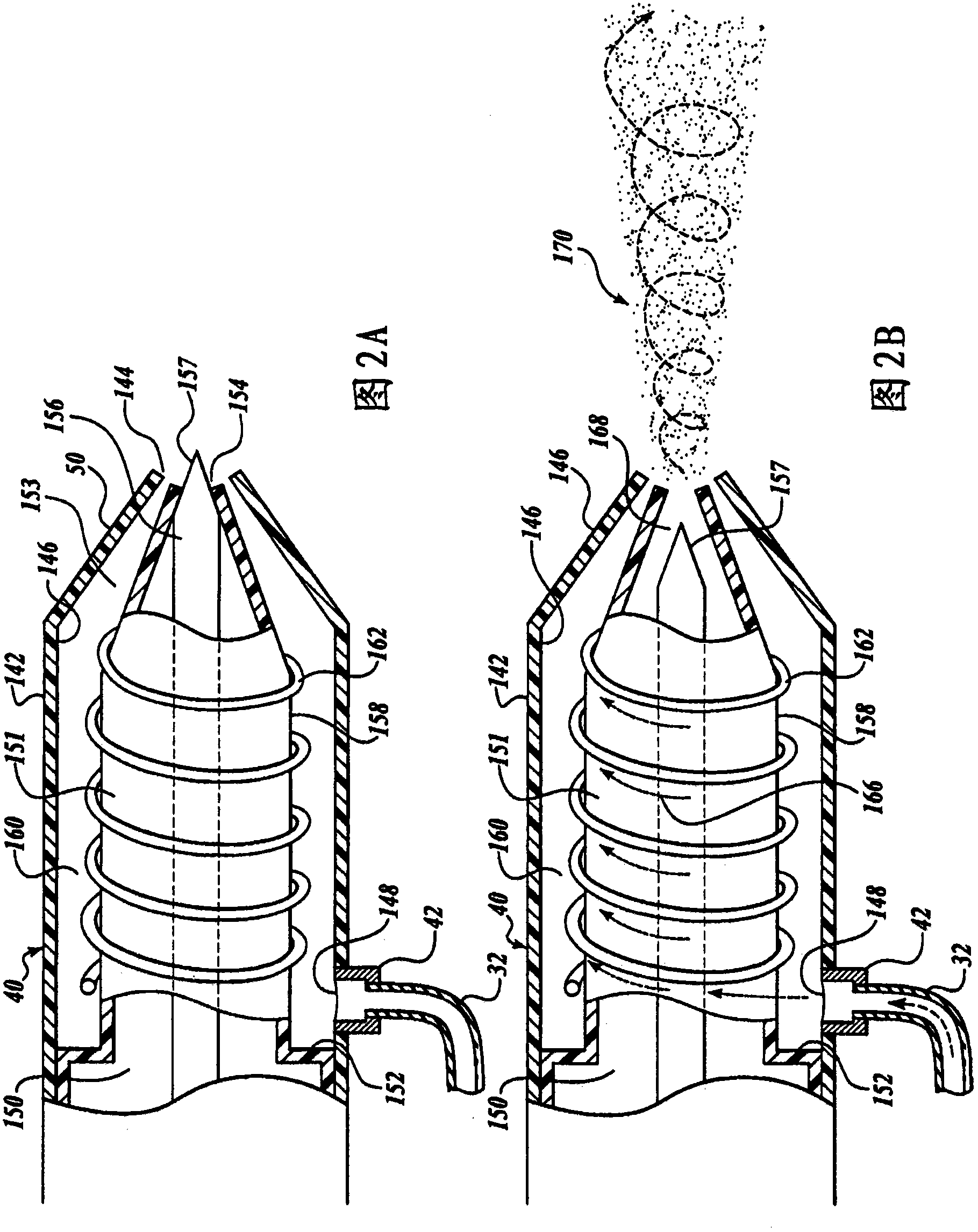Circumferential aerosol device
A kind of equipment and aerosol technology, applied in nebulizers for treatment, other medical devices, inhalers, etc.
- Summary
- Abstract
- Description
- Claims
- Application Information
AI Technical Summary
Problems solved by technology
Method used
Image
Examples
example 1
[0071] This example describes figure 1 and 2 examples of different functional parameters of the device.
[0072] The spray rate was tested by varying the drive pressure from 1 to 6 pounds per square inch and varying the diameter of the orifice 154 . The nebulization rate was reproducible and within the desired range for human use, ie less than 50 microliters per second.
[0073] Figure 9 Represents the particle size distribution when water is sprayed from the device into a viscous oil at a distance of 2 cm and 4 psi, the obtained droplet diameters are measured using a microscope with size analysis software. A total of 199 measurements were performed. The distribution indicated that the device produced particles with diameters ranging from 5 to greater than 50 microns, with the majority of particles between 5 and 20 microns in diameter, with an average diameter of 11.2 microns. The size distribution obtained by this method of nebulization is therefore ideal for nasal spray...
example 2
[0081] This example demonstrates the improved penetration of a simulated nose cone with a device including multiple outlets as compared to devices with a single outlet with and without circumferential flow.
[0082] method:
[0083] The flow simulation uses the Star-CCM+ computational fluid dynamics simulation software package (CD-adapco) version 3.06.006. In the simulation, a cone similar to the nasal cavity geometry was used for simplicity. The cone is designed to narrow towards the top with only one outlet at the bottom of the cone for residual air. Thus, the air in the top of the cone is stagnant and must be displaced for the nozzle flow to penetrate the top of the cone, much like the upper nasal cavity of a human. The size of the cone is 7.5 cm from top to bottom to realistically simulate nasal delivery to the human olfactory epithelium.
PUM
 Login to View More
Login to View More Abstract
Description
Claims
Application Information
 Login to View More
Login to View More - R&D
- Intellectual Property
- Life Sciences
- Materials
- Tech Scout
- Unparalleled Data Quality
- Higher Quality Content
- 60% Fewer Hallucinations
Browse by: Latest US Patents, China's latest patents, Technical Efficacy Thesaurus, Application Domain, Technology Topic, Popular Technical Reports.
© 2025 PatSnap. All rights reserved.Legal|Privacy policy|Modern Slavery Act Transparency Statement|Sitemap|About US| Contact US: help@patsnap.com



